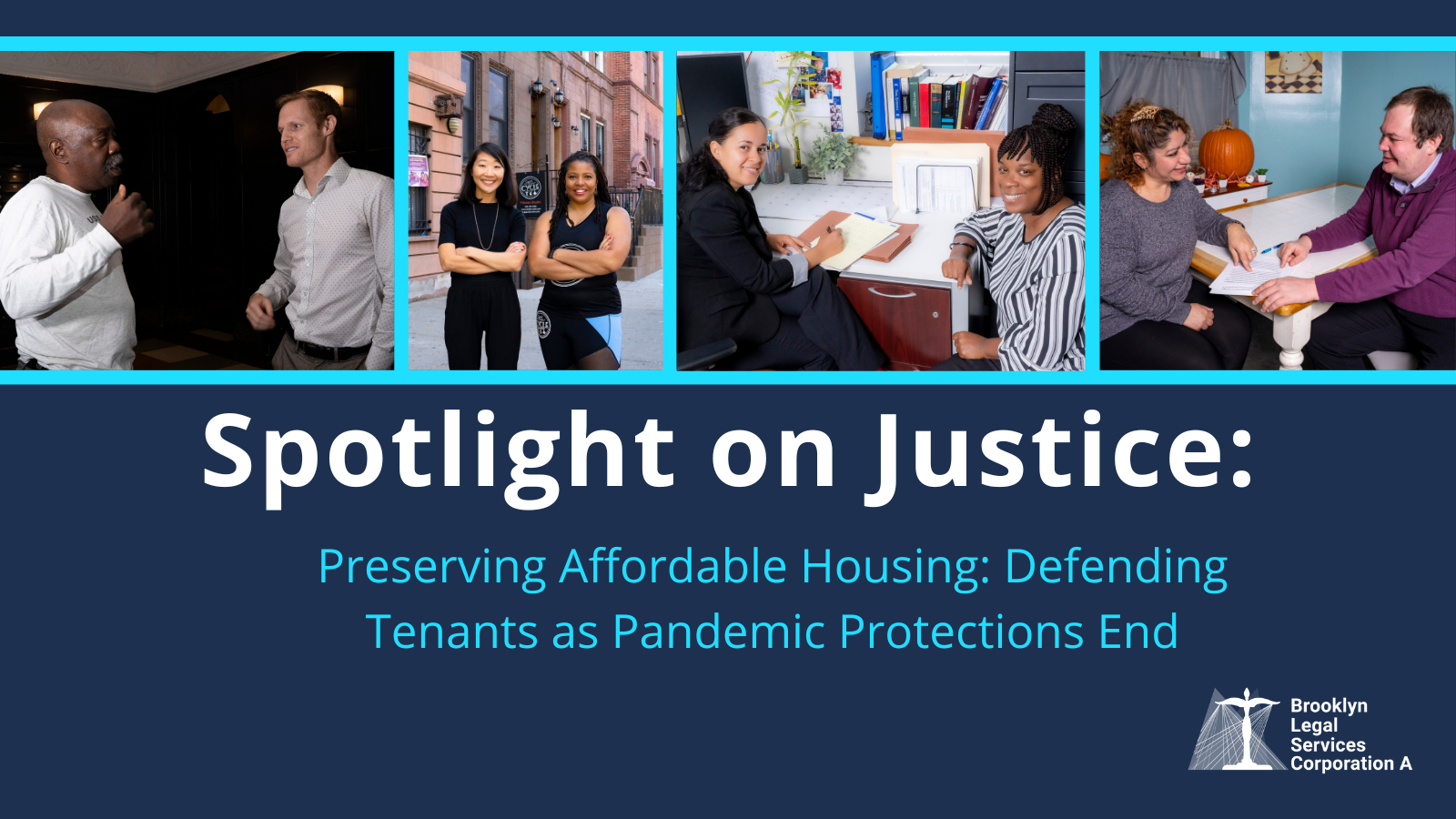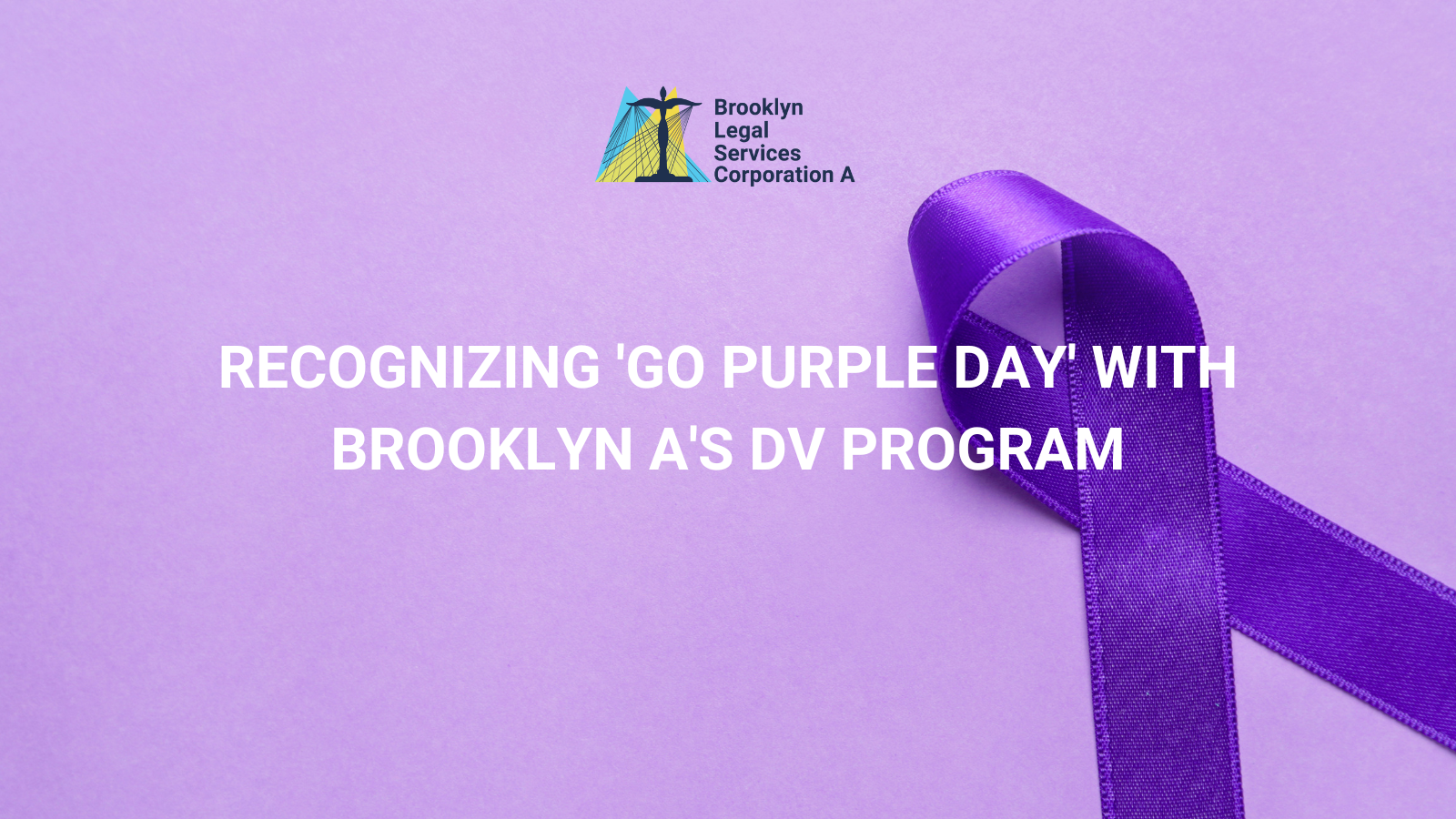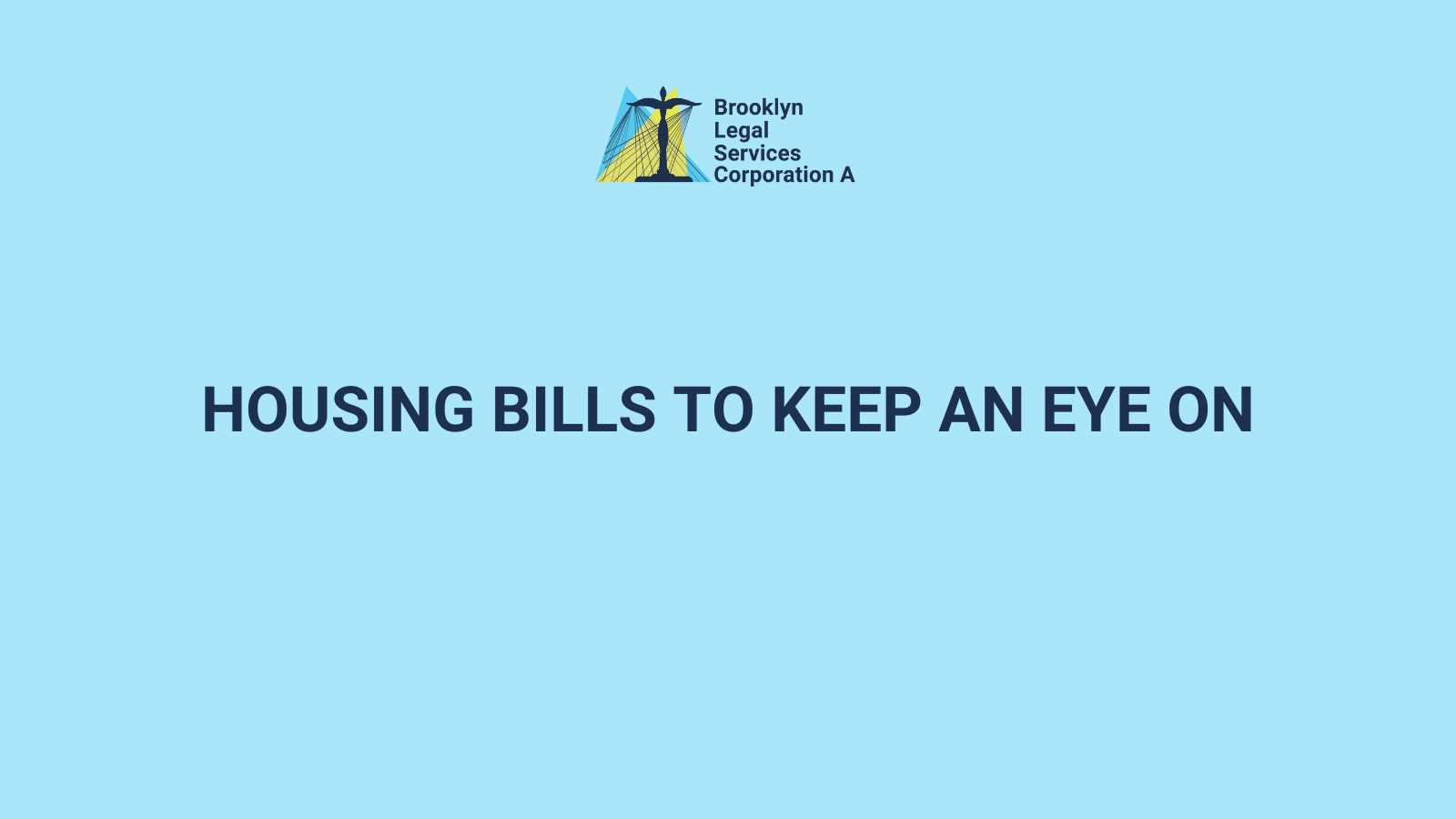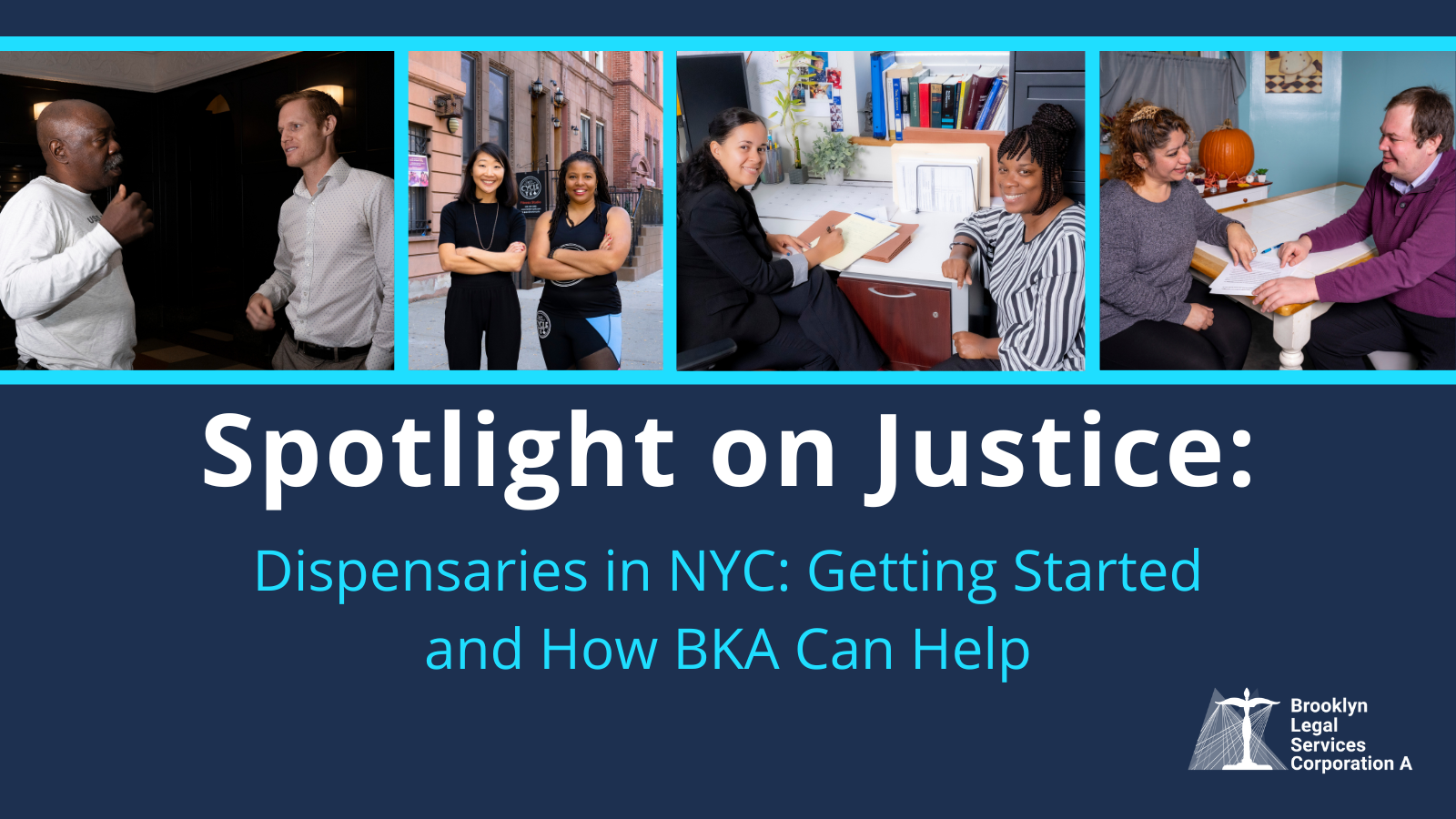By Daniela Adao October is an important month for Brooklyn A’s Domestic Violence Program: it…

PAH: Defending Tenants as COVID Protections End
By Zac Hale
New York City’s renters have been through deeply difficult times since the onset of the COVID-19 pandemic. With so many put out of work by sickness or the quarantine shutdowns, countless tenants fell behind on rent and were only able to remain in their homes thanks to the federal and state eviction moratoriums. At Brooklyn A, our Preserving Affordable Housing (PAH) team has seen first-hand how helpful these emergency measures have been, and how challenging the road ahead will be for renters as effectively all those measures have now expired.
In the heart of winter, with heat issues and other basic repair issues being top of mind for so many tenants, we hope to see the city move quickly to provide as much relief as possible for struggling New Yorkers. The pandemic, the housing crisis, and growing economic pressures mean we are hardly back to “normal” here in the city and we could use emergency-level measures again to prevent massive displacement. Here are the policy trends we observed in the last year and how they impacted our clients:
Expired protections
It’s been more than a year since the eviction moratorium was lifted. Since then, New York City has seen more than 4,400 evictions across the city—and while the number is below pre-pandemic levels, the massive backlog of new and resumed eviction cases is overwhelming an under resourced court system. The numbers continue to rise and will likely jump even more with the closure of Emergency Rental Assistance Program (ERAP) applications in January. ERAP assisted with the rental debt of more than 26,000 renters across New York state, paying an estimated value of $326 million so tenants could remain in their homes. The program also served as a limited eviction moratorium: tenants with a pending application are protected from eviction, allowing thousands of renters breathing room as they seek relief money and get back on their feet.
ERAP could help New Yorkers again if it receives more funding—something we called for in City & State NY in January. The federal government could supply additional funding to ERAP or other programs to help stem the tide of a potential tidal wave of eviction cases in the first half of 2023. The federal government is not the only possible source of funding, however, and the state budget debates in Albany have already seen proposals to expand rent relief funding both for private tenants and NYCHA residents. NYCHA residents are especially in need of assistance because they were largely omitted from the initial rounds of ERAP funding. Accordingly, NYCHA and public-housing advocates are asking for hundreds of millions of dollars in relief for COVID-era arrears.
Expanded NYCHA funding would certainly help families in New York’s public housing developments to avoid displacement, but not all proposed rent-arrears funding would offer strong protections. At least one proposal, aimed at private renters, would allow landlords to receive payment for alleged arrears without protecting the tenant from eviction. While assistance with back rent is an important part of fighting displacement, it is not on its own sufficient for preventing evictions in the non-regulated units that make up more than half of New York City’s rental stock.
We at Brooklyn A support measures that keep people in their homes and out of debt. Where possible, funding for rent arrears should be coupled with tenant protections like those provided by ERAP. Not only would these programs prevent displacement as the city deals with an unprecedented housing crisis, but eviction prevention has also proven to be effective public health policy. Early studies have shown states that lifted their moratoriums earlier had higher rates of COVID-19 infections, and even before the pandemic research demonstrated a link between losing one’s home and higher rates of poor health outcomes like substance abuse, more frequent need for emergency care and higher mortality.
Current relief and potential policy changes
Much of the city and state is back to “normal” policy-wise—that is to say the relief available now is about the same as what you could find pre-pandemic. The Housing Stability and Tenant Protection Act of 2019 created strong protections for renters that remain in place. “One Shot Deals” are also available to New Yorkers behind on their rent, offering limited rental assistance for those who qualify. There are also a variety of voucher programs for specific groups, including the formerly homeless, veterans, domestic violence survivors and those living in rent-controlled units, that can help pay the rent.
Longer-term, there are bills being proposed by housing advocates at the city and state level that could further help tenants remain in safe and affordable housing. Expanding the Right to Counsel in housing court matters, increasing penalties on landlords for repair issues, and requiring “good cause” for evictions could potentially reach a vote in Albany or the city council in the coming year. A good cause eviction bill, which would have prevented landlords from evicting tenants for any reason other than failure to pay rent or violation of the lease, was proposed in New York state in 2021 but it failed to become a law. A new version of the bill has been introduced and housing advocates are hopeful it will be included in Governor Kathy Hochul’s budget this year.



